What Is Blanching: Learn When And How To Blanch Cauliflower
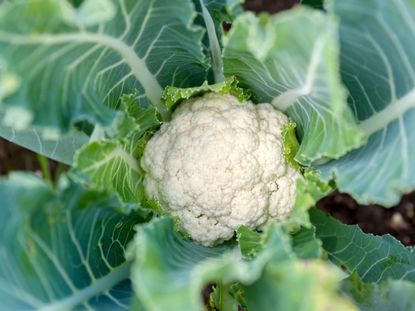

Learning how or when to blanch a cauliflower is a commonly asked gardening question, and an important thing to know. To help with becoming familiar with this garden procedure, let's learn more about blanching cauliflower.
What is Blanching?
For many people, particularly those familiar with the vocabulary of cooking and preserving food, blanching means plunging a fruit or vegetable into boiling water for a very short period of time to stop the maturation process, then rapidly transferring it to ice water so the item does not become fully cooked. What is blanching in vegetable gardening, however, is something entirely different. It is the technique of covering a plant or plant part to prevent the development of color. Blanching cauliflower is such a technique. That's what gives the vegetable its creamy white color. Does cauliflower have to be blanched? Technically, no. Blanching has nothing to do with head development or nutritional content. However, if you don't, the curds will be greenish brown rather than white and the flavor will be stronger, almost bitter. Since this is one of the more difficult garden vegetables to grow well, why wouldn't you take the extra step of blanching cauliflower to add to the pleasure of harvesting a perfectly formed, sweet tasting head? Learning how to blanch cauliflower isn't difficult and the results will be well worth the effort.
When and How to Blanch Cauliflower
Cauliflower needs cool temperatures, a consistent supply of moisture, and lots of fertilizer. To get white curds on many varieties, it is necessary to tie up the leaves around the developing curd. The first thing to know is when to blanch a cauliflower head. Start checking your plants about 30 days after transplanting your seedlings. The curds develop quickly and it's that development that tells you when to blanch. A cauliflower curd about the size of a chicken egg is perfect. Smaller curds are already protected from the light by the leaves surrounding them. As they grow, they become more exposed and this is the time to begin blanching. Cauliflower curds develop rapidly into full heads so the window is small. Cauliflower is extremely susceptible to fungus, so the second condition of when to blanch a cauliflower would be the driest part of the day. You don't want to trap moisture inside your leaf cover. How to blanch cauliflower successfully is the next step. When the curd is 2 to 3 inches (5-8 cm.) in diameter (about the size of that egg) the large outer leaves should be tied up and over the emerging curds. The easiest way to do this is to tie the leaves with rubber bands, tape, or twine. If you're using rubber bands, be sure they are sturdy enough to contain the growing leaves and heads. The leaves should be tied loosely to give the curds plenty of room to grow. Since the curds develop at different rates, you'll need to check your plants for several days, tying up those that are ready. If your planting is large, using a different color band or string for each day will prove useful for harvest, as those heads that were tied first will be ready for harvest first. Time from tying to harvest varies from four to five days during warm spring weather and 14 to 21 days during the cool days of autumn.
Does Cauliflower Have to be Blanched?
A small caveat to this question should be noted. There are varieties that are self-blanching. Their leaves have been bred to curl up and over the developing head and for the most part, are successful. Their downfall comes with the development of extra large curds where the leaves simply aren't long enough to do the job. There are also more colorful varieties on the market and because they aren't white may, at first glance, appear not to need blanching. Cauliflower such as these will still develop chlorophyll and will lose their unique color if not protected from the sun. The exception to this would be the plant known as purple cauliflower, which isn't cauliflower at all. It's broccoli. Knowing when to blanch a cauliflower and how to blanch cauliflower will add the perfect finishing touches to a vegetable that is often difficult to grow.
Gardening tips, videos, info and more delivered right to your inbox!
Sign up for the Gardening Know How newsletter today and receive a free download of our most popular eBook "How to Grow Delicious Tomatoes."

Jackie Rhoades began writing for Gardening Know How in 2010.
-
 Grow a Bathroom Oasis: 8 Best Bathroom Plants With No Light or Low Light
Grow a Bathroom Oasis: 8 Best Bathroom Plants With No Light or Low LightSome apartment dwellers grow the best bathroom plants with no light or low light. Read how one of our favorite plant lovers does it in the big city.
By Teo Spengler
-
 "My Worst Mistake" – Gardeners Share 10 Hard-Learned Lessons
"My Worst Mistake" – Gardeners Share 10 Hard-Learned LessonsGardeners never stop learning, and sometimes our mistakes are the best teachers. But why not save time and heartache by learning from other gardeners' failures?
By Melanie Griffiths
-
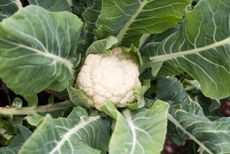 Cauliflower Protection In Gardens – Cauliflower Pest Protection And More
Cauliflower Protection In Gardens – Cauliflower Pest Protection And MoreGrowing cauliflower is not for the faint of heart. The plant is testy and sensitive to heat, frost, and pests. If you want to grow it, protecting cauliflower plants is essential to your success. This article will help with tips on cauliflower plant protection.
By Liz Baessler
-
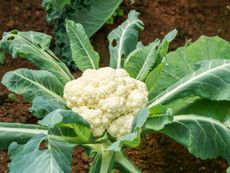 Problems Growing Cauliflower – Learn About Diseases Of Cauliflower
Problems Growing Cauliflower – Learn About Diseases Of CauliflowerKnowing what type of cauliflower diseases may afflict the veggie and troubleshooting these cauliflower problems will aid in the healthy production and yield of the plant. Click this article to learn more about treating these issues.
By Amy Grant
-
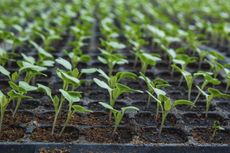 Cauliflower Seed Germination: Tips On Planting Cauliflower Seeds
Cauliflower Seed Germination: Tips On Planting Cauliflower SeedsIf you're looking for a little bit of a challenge in your garden this year, why not try growing cauliflower from seeds? This article provides information on planting cauliflower seeds. Click here for a cauliflower seed planting guide.
By Liz Baessler
-
 Wilting Cauliflower: Reasons For Cauliflower Plants Wilting
Wilting Cauliflower: Reasons For Cauliflower Plants WiltingWhy are my cauliflowers wilting? What can I do about wilting cauliflower? This is a discouraging development for home gardeners, and troubleshooting cauliflower problems isn't always easy. For helpful tips, click this article.
By Mary H. Dyer
-
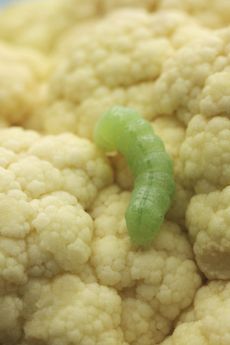 Identifying Cauliflower Bugs: Tips On Controlling Cauliflower Insects
Identifying Cauliflower Bugs: Tips On Controlling Cauliflower InsectsCauliflower bugs can decimate the crop and make the flower head unfit to eat. Treating bugs on cauliflower starts with correct identification of the pest and a targeted control plan that is non-toxic and safe for food plants. This article will help.
By Bonnie L. Grant
-
 Companion Planting Cauliflower: What Are Cauliflower Companion Plants
Companion Planting Cauliflower: What Are Cauliflower Companion PlantsCompanion planting pairs two or more types of plants for the mutual benefit of each other. In this particular article, we're going to delve into cauliflower companion planting. What cauliflower companion plants grow well with cauliflower?
By Amy Grant
-
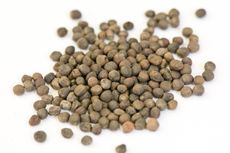 Harvesting Cauliflower Seeds: Where Do Cauliflower Seeds Come From
Harvesting Cauliflower Seeds: Where Do Cauliflower Seeds Come FromI love cauliflower and usually grow some in the garden. I generally buy bedding plants, although cauliflower can be started from seed. That fact gave me a thought. Where do cauliflower seeds come from? This article will help answer that.
By Amy Grant
-
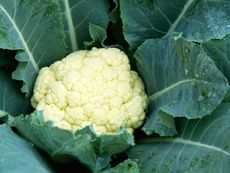 Cauliflower Care In Pots: Can You Grow Cauliflower In A Container
Cauliflower Care In Pots: Can You Grow Cauliflower In A ContainerCan you grow cauliflower in a container? Cauliflower is a large vegetable, but the roots are surprising shallow. If you have a container wide enough to accommodate the plant, you can definitely grow this tasty veggie. Click here to learn more.
By Mary H. Dyer